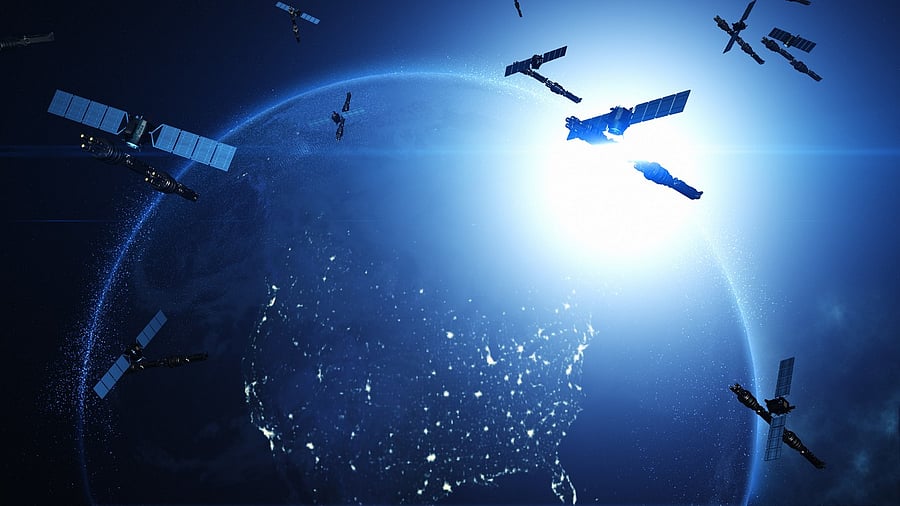
Representative illustration showing a constellation of satellites.
Credit: iStock Photo
With the catastrophic effects of climate change becoming increasingly apparent in the growing intensity of extreme weather events, a new threat has been identified that could prevent the Earth's atmosphere from healing itself—satellite internet.
Companies like Elon Musk's Starlink are growing their satellite internet network by assembling together 'megaconstellations', but scientists fear that such activities could lead to "significant ozone depletion".
In a study published on Geophysical Research Letters, researchers from the University of Southern California highlighted this new threat, warning that harmful substances left behind by satellites could linger for "decades" in the Earth's atmosphere.
Almost all satellites that are put into the Earth's orbit have a limited life span, at the end of which they re-enter the atmosphere, burning up in the process.
It is precisely this process that could prove dangerous, researchers warned.
"Satellites burn up at the end of service life during reentry, generating aluminum oxides as the main byproduct. These are known catalysts for chlorine activation that depletes ozone in the stratosphere," the researchers wrote in the abstract of their study.
"We find that the demise of a typical 250-kg satellite can generate around 30 kg of aluminum oxide nanoparticles, which may endure for decades in the atmosphere," they warned.
Notably, they went on to explain that re-entry scenarious involving 'megaconstellations' of satellites could produce up to 360 metric tonnes of aluminum oxide compounds annually, a more-than-20-time jump over the 17 metric tonnes of such compounds that were released by all re-entering satellites in 2022.
"Due to their small size, the byproducts of spacecraft reentry can endure in the atmosphere and remain unnoticed until ozone concentration levels start decreasing," the study authors noted, adding that a further exploration of this topic was needed.
"As reentry rates increase, it is crucial to further explore the concerns highlighted in this study," the authors concluded.
